Stocks Inch Higher Amid Strong Jobs Data and Geopolitical Tensions; Dollar Rallies as Safe-Haven Demand Rises | Daily Market Analysis

Key events:
- USA - Initial Jobless Claims
- USA - S&P Global Services PMI (Sep)
- USA - ISM Non-Manufacturing PMI (Sep)
- USA - ISM Non-Manufacturing Prices (Sep)
On Wednesday, the Dow Jones eked out a slight gain, supported by stronger jobs data, though rising tensions in the Middle East tempered the upside. The Dow Jones Industrial Average increased by 39 points, or 0.1%, while the S&P 500 index remained flat, and the NASDAQ Composite added 0.1%.
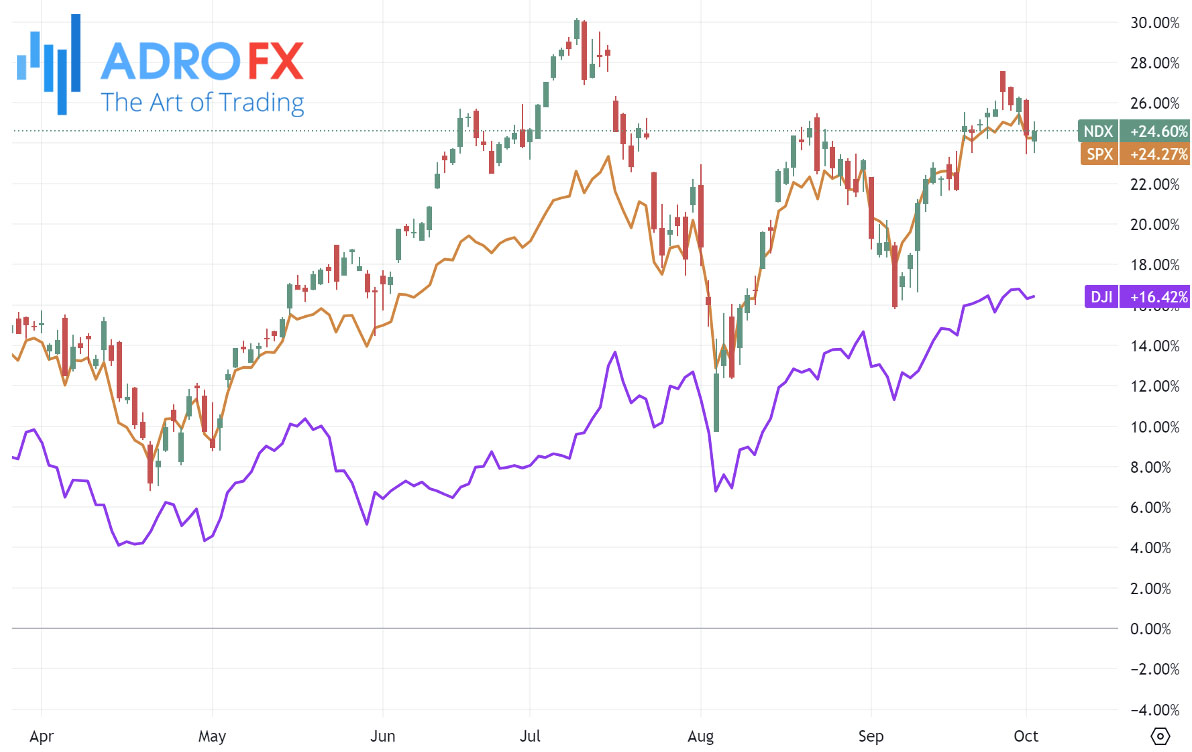
Tesla (NASDAQ: TSLA) saw its stock tumble by over 3% after reporting third-quarter vehicle deliveries that fell short of expectations. Despite efforts to boost demand through incentives and low-cost financing, the company's aging models struggled in an increasingly competitive market. While the delivery numbers missed estimates, Wedbush noted they reflected a "clear improvement" from the first half of the year and maintained its outperform rating, believing that reaching the 1.8 million delivery target for the year remains crucial.
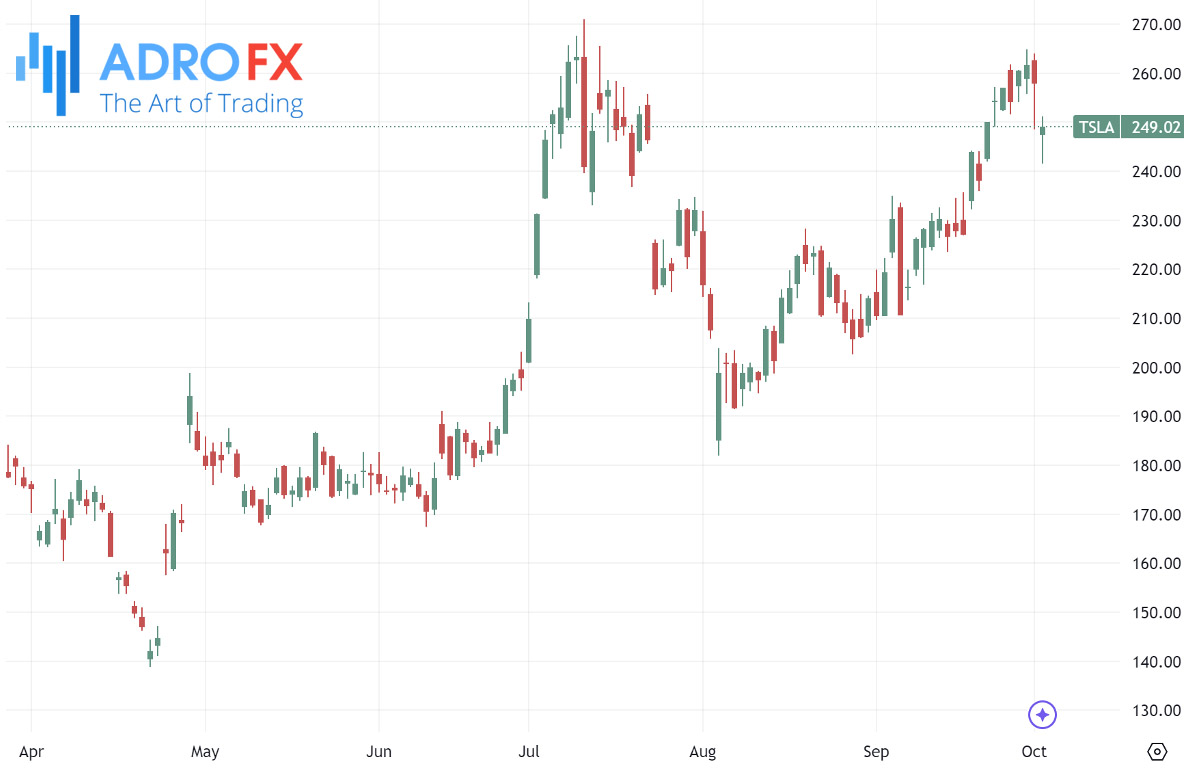
The US private payrolls report from ADP, released on Wednesday, showed an increase of 143,000 jobs in September, surpassing the forecast of 103,000. This data signals ongoing strength in the US labor market, and all eyes now turn to the Labor Department's September employment report due on Friday. The Federal Reserve continues to monitor the labor market closely, and any signs of unexpected weakening could prompt action. Richmond Fed President Barkin stated that the median outlook for 2024 includes 50 basis points of rate cuts. According to Investing.com's Fed Rate Monitor Tool, the odds favor a 25-basis-point cut at the Fed's November meeting, with only two meetings left in the year.
The NZD/USD pair extended its slide for the third consecutive day on Thursday, falling from its recent peak of 0.6375-0.6380 to below the mid-0.6200s during the Asian session. This drop was largely driven by renewed US Dollar strength, fueled by expectations that the Federal Reserve may not be as aggressive in easing its monetary policy as previously anticipated. This shift in sentiment, combined with ongoing geopolitical risks in the Middle East, pushed investors away from the risk-sensitive New Zealand Dollar and toward the safe-haven USD.
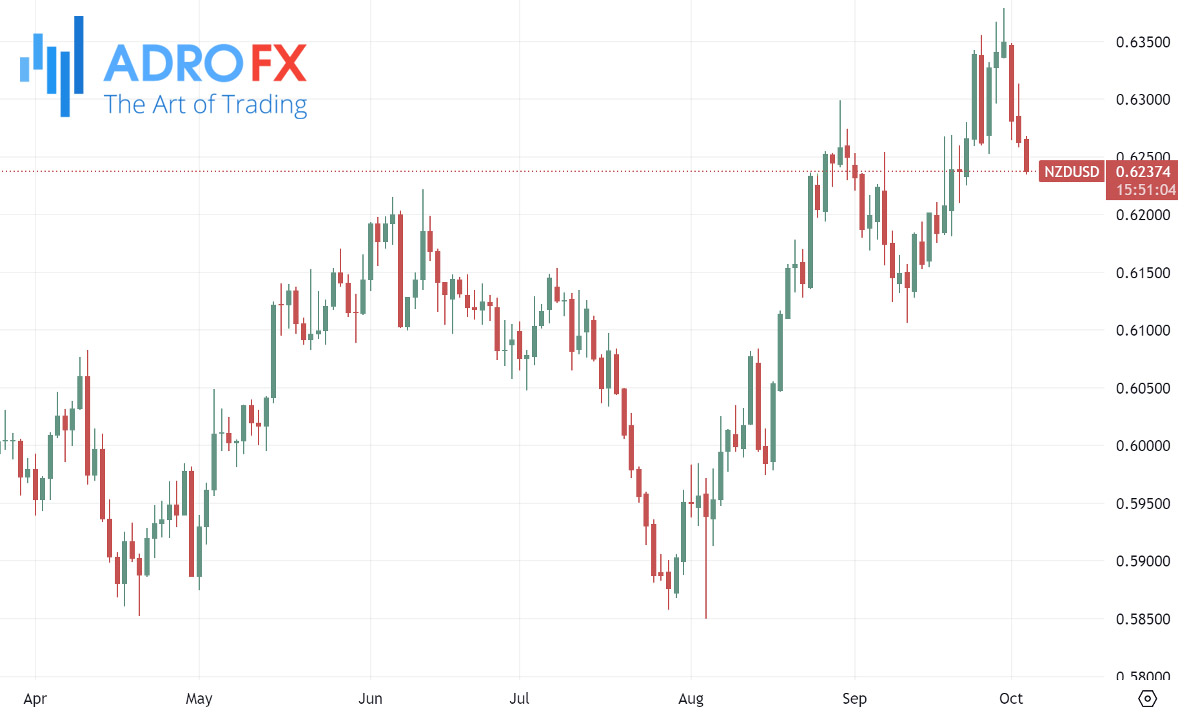
Similarly, the Australian Dollar faced downward pressure against the USD on Thursday, influenced by the rising geopolitical tensions in the Middle East and the release of key economic data. Australia's trade balance for August came in at 5,644 million, slightly exceeding expectations but showing a decline in both exports and imports. Despite this, the Reserve Bank of Australia remains hawkish, with strong retail sales growth in August reducing the likelihood of an early rate cut. Markets have largely dismissed the chances of a rate cut in November. Additionally, stimulus measures from China, Australia’s largest trading partner, have supported commodity prices, providing some relief for the AUD amidst the broader risk-averse sentiment.
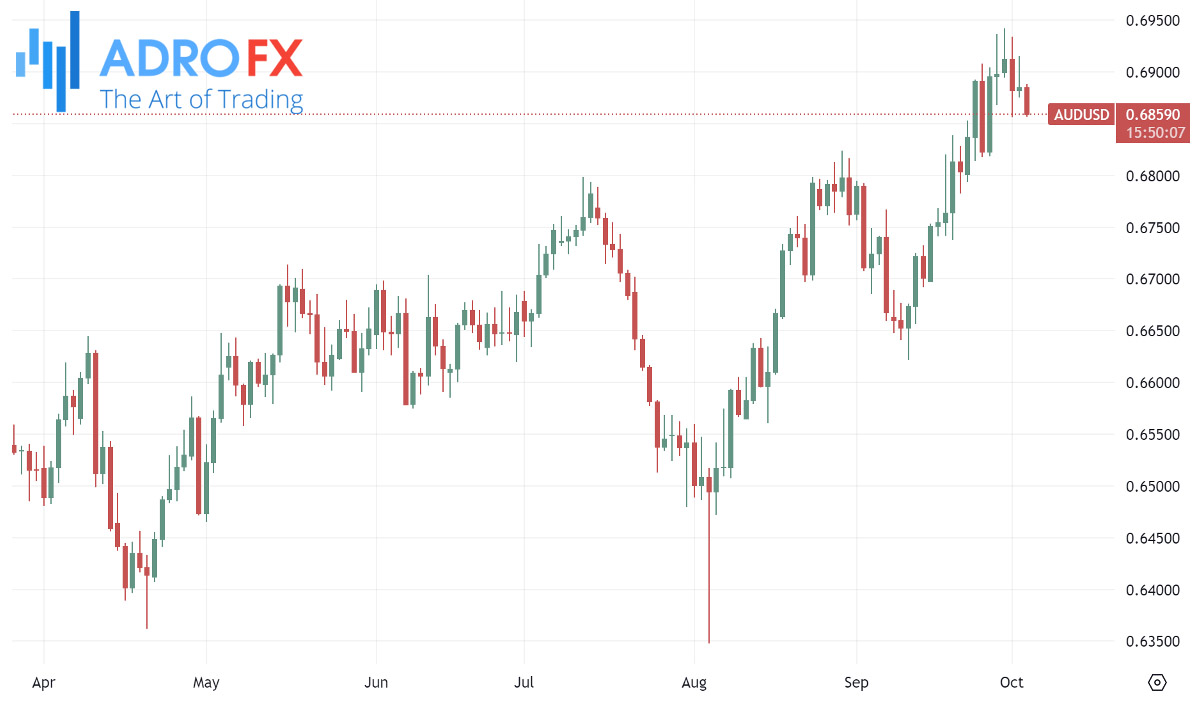
The Japanese Yen continued its decline on Thursday following remarks on monetary policy by new Prime Minister Shigeru Ishiba, who met with Bank of Japan Governor Kazuo Ueda. Ishiba stated that he did not see a need for further rate hikes, contributing to the Yen's weakness. In the previous session, the Yen fell nearly 2% against the USD, its largest drop since February 2023. Japan’s Economic Revitalization Minister also emphasized that the BoJ should conduct thorough economic assessments before considering any additional rate hikes. Futures markets now indicate less than a 50% chance of a rate hike by December, with rates expected to rise only marginally by the end of next year.
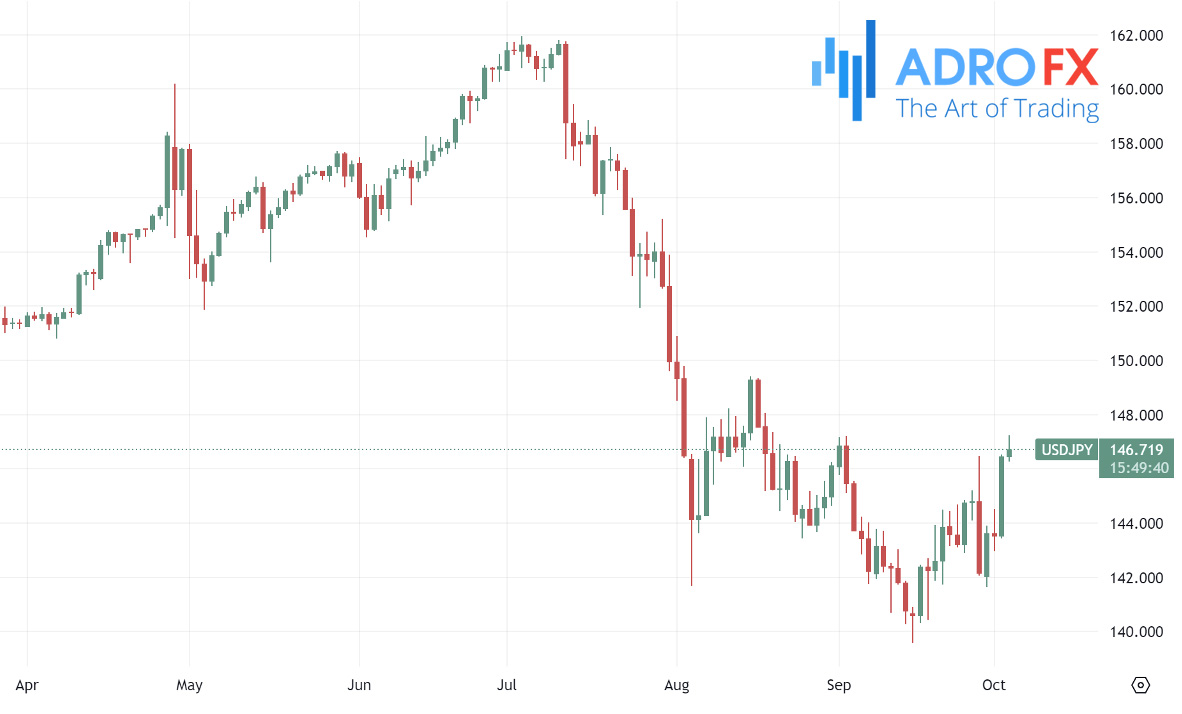
Meanwhile, the USD/CAD pair gained momentum for the second straight day on Thursday, climbing back above the psychological 1.3500 mark during the Asian session. The stronger USD, buoyed by resilient US economic data, drove the pair higher. Additionally, geopolitical concerns and reduced bets on aggressive Fed rate cuts further supported the USD. The Canadian Dollar, on the other hand, weakened due to lower crude oil prices and expectations of larger interest rate cuts by the Bank of Canada. A surprise increase in US crude oil inventories also suggested that the market could withstand disruptions stemming from Middle Eastern conflicts, which further weighed on the commodity-linked CAD. As a result, the USD/CAD pair could potentially test its weekly high in the coming sessions.
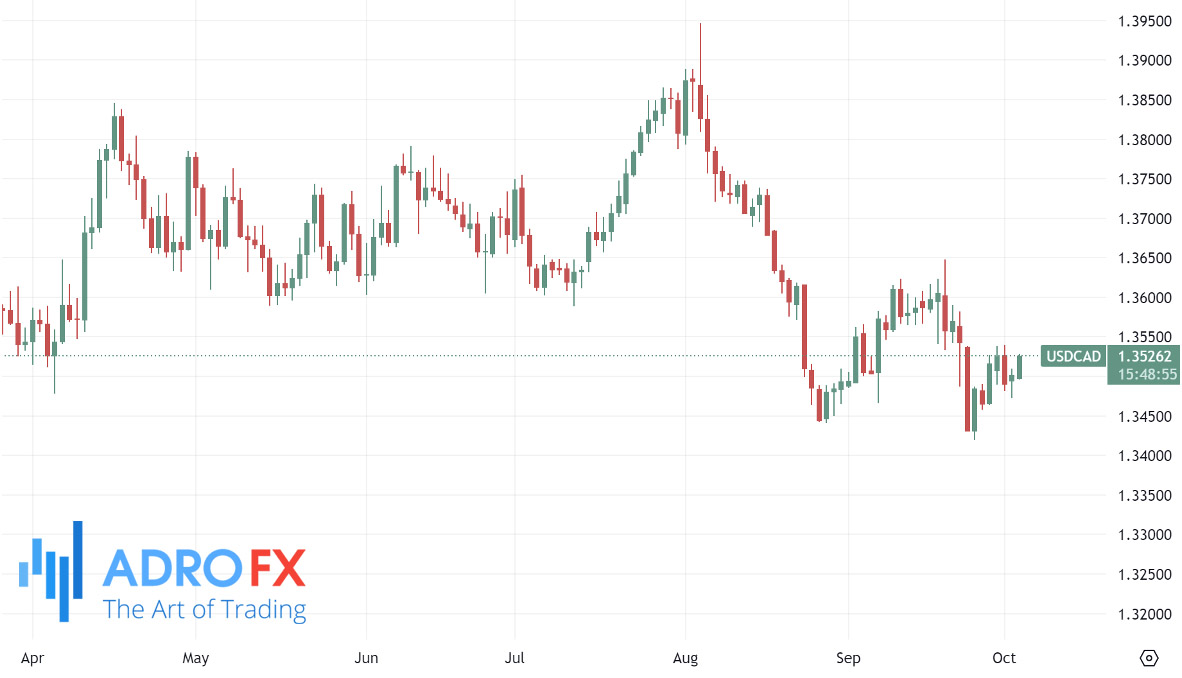
Gold prices remained subdued during the Asian session on Thursday, primarily pressured by the strengthening USD. The upbeat ADP employment report further dampened hopes for an aggressive Fed rate cut in November, pushing the USD Index to a three-week high. However, the downside for gold was limited by escalating geopolitical tensions in the Middle East. Iran launched over 200 ballistic missiles at Israel, while Israel conducted air strikes in central Beirut, raising the risk of a broader regional conflict. This geopolitical uncertainty provided some support for the safe-haven metal.

Additionally, traders are likely to hold back on major bets until the release of the US nonfarm payrolls (NFP) report on Friday, which could further influence the Federal Reserve's policy decisions moving forward.









